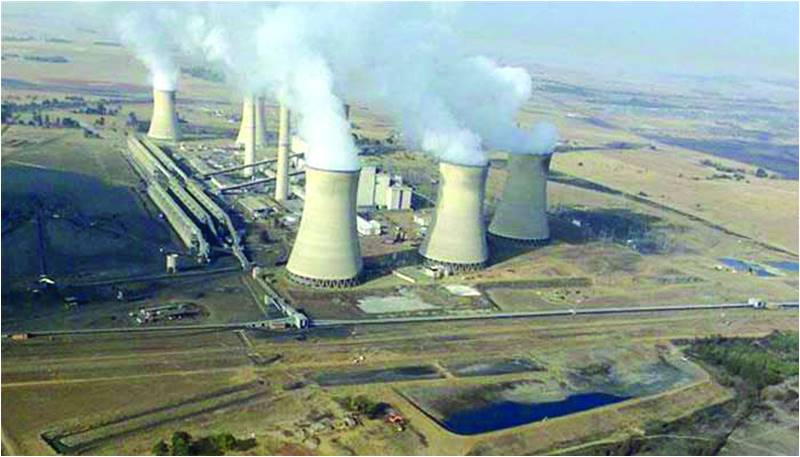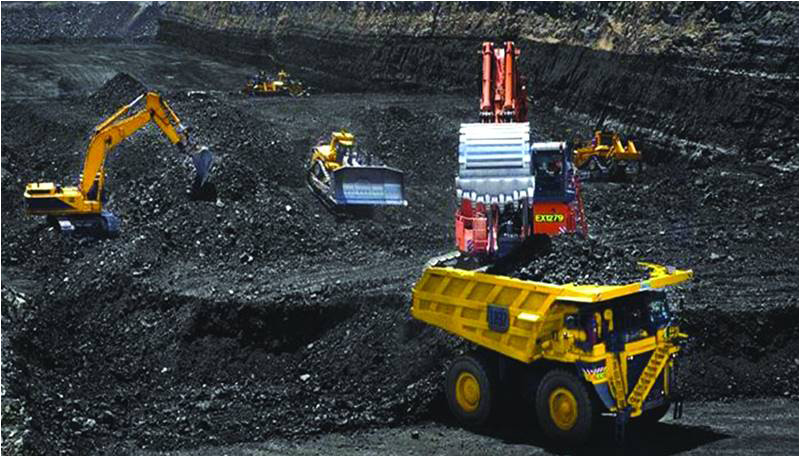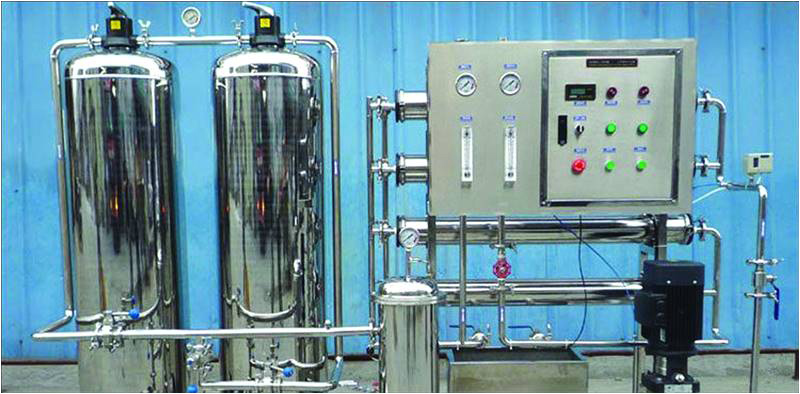
Tharparkar has been an exemplary area of the country when it comes to peace and interfaith harmony. Since the inception of Pakistan, or even long before Partition, people here have been dwelling together regardless of colour, caste and creed. Mosques stand here next to temples and both Muslims and Hindus participate in each others’ religious and social events heartily. Sand dunes, peacocks, chaunras (typical Thari huts) and desert flora have been trademarks of the beauty of this landscape.
But Thar’s landscape has been unnaturally transformed, devastated and neglected by government entities as well as mining companies.
According to the ‘Geography of Poverty in Pakistan Report’ by the Pakistan Poverty Alleviation Fund (PPAF), Tharparkar is the poorest district of Sindh as almost 88 % of the population spends its life below the poverty line. The district, with a 0.227 HDI (Human Development Index) ranks very low in the UNDP’s National Human Development Report. According to district headquarter hospital records alone, in the year 2019, 825 children and over 200 women have lost their lives due to malnutrition and various diseases. Moreover, district police data confirms that 77 people committed suicide in Tharparkar district last year. Where such reports and records portray the miseries of poor Tharis, they also indicate how the promises of a better life to Tharis from state and private-sector entities alike remain largely unfulfilled.

Tharparkar is totally a rain-fed agricultural region. In other words, only rains bring prosperity in the lives of poor farmers. But if it does not rain during the year, or if the rains are late or too heavy, the people have to be dependent either on the assistance of moneylenders or nongovernmental organizations. Last year, rains on time created some hope for local farmers. But when their crops became ready to be harvested, the sudden occurrence of heavy rainfall followed by locust attacks dashed all hopes to the ground. The provision of fresh water has been another massive issue which could not be resolved yet by governments since 1947. There are more than 700 Reverse Osmosis (RO) plants in Thar but only 40% of these plants are operational.
Last year in January after visiting Tharparkar, the chairman of the Senate’s Functional Committee on problems of less developed areas Muhammad Usman Kakar, while addressing a gathering of district management, civil society and local elected representatives in Mithi, said “95 percent of the country’s natural resources are present in less developed areas but owing to unavailability of basic human needs in such areas, life is extremely miserable for the locals there. Tharparkar is also one such area - full of natural resources (coal) but people here are dying of hunger, thirst and diseases.” He further said, “If only 1 percent of the royalty of the Thar Coal Project were to be provided to Thar, the situation would be better.”
Despite possessing 175 tons of coal reserves from which in the initial phase two power plants of 660 MW each have started providing electricity to the national grid since April 2019, still 80% of the villages of district Tharparkar remain without electric lighting. Out of a total of 2,600 villages only 514 have access to electricity. This is the situation five years after the inception of the work at Thar Coal Project.

Excavating coal from the thirsty land of Thar would be a matter of national interest but displacing the barefooted/empty handed locals without providing them with reasonable compensation or substitutes for further existence raises the question as to whose interests are served through such deprivation. Both mining companies and the government still refuse to address this question.
Undoubtedly, Thar Coal Project is a much-needed response to the national electricity crisis and a source of economic uplift for Pakistan. But it seems the costs in terms of deprivation are to be paid by the people of Thar. Mining work has been carried out at only two blocks namely One and Two out of a total of fourteen blocks but as a consequence hundreds of villages, thousands of humans and millions of trees have been affected - so far.
Ali Bux Lanjo, who is about to be displayed due to operations at Block One, says:
“Every year during the rainy season when we along with our families and livestock go to our agricultural lands for cultivation, we put up makeshift huts there and when the season ends we tear down those same handmade temporary shelters because we have to leave for our villages until the next rains. Nobody except a Thari can understand the the pain every time we leave those makeshift huts and localities. Why don’t these mining companies understand? How can we leave our centuries-old villages and resettle elsewhere?”
Thousands of Tharis still work as factory laborers in Karachi and other cities of Sindh on daily wages because for them the doors of these mining companies are closed. Outsiders have been provided opportunities because for the companies they are more “trustworthy” and experienced than locals.
Five years since the inception of Thar Coal, the people of the region are wondering if the much-vaunted benefits were for everyone in the country except themselves. Answers are in short supply.
The writer is a freelance contributor and he can be reached at abbaskhaskheli110@gmail.com
But Thar’s landscape has been unnaturally transformed, devastated and neglected by government entities as well as mining companies.
According to the ‘Geography of Poverty in Pakistan Report’ by the Pakistan Poverty Alleviation Fund (PPAF), Tharparkar is the poorest district of Sindh as almost 88 % of the population spends its life below the poverty line. The district, with a 0.227 HDI (Human Development Index) ranks very low in the UNDP’s National Human Development Report. According to district headquarter hospital records alone, in the year 2019, 825 children and over 200 women have lost their lives due to malnutrition and various diseases. Moreover, district police data confirms that 77 people committed suicide in Tharparkar district last year. Where such reports and records portray the miseries of poor Tharis, they also indicate how the promises of a better life to Tharis from state and private-sector entities alike remain largely unfulfilled.

Tharparkar is totally a rain-fed agricultural region. In other words, only rains bring prosperity in the lives of poor farmers. But if it does not rain during the year, or if the rains are late or too heavy, the people have to be dependent either on the assistance of moneylenders or nongovernmental organizations. Last year, rains on time created some hope for local farmers. But when their crops became ready to be harvested, the sudden occurrence of heavy rainfall followed by locust attacks dashed all hopes to the ground. The provision of fresh water has been another massive issue which could not be resolved yet by governments since 1947. There are more than 700 Reverse Osmosis (RO) plants in Thar but only 40% of these plants are operational.
Last year in January after visiting Tharparkar, the chairman of the Senate’s Functional Committee on problems of less developed areas Muhammad Usman Kakar, while addressing a gathering of district management, civil society and local elected representatives in Mithi, said “95 percent of the country’s natural resources are present in less developed areas but owing to unavailability of basic human needs in such areas, life is extremely miserable for the locals there. Tharparkar is also one such area - full of natural resources (coal) but people here are dying of hunger, thirst and diseases.” He further said, “If only 1 percent of the royalty of the Thar Coal Project were to be provided to Thar, the situation would be better.”
Despite possessing 175 tons of coal reserves from which in the initial phase two power plants of 660 MW each have started providing electricity to the national grid since April 2019, still 80% of the villages of district Tharparkar remain without electric lighting. Out of a total of 2,600 villages only 514 have access to electricity. This is the situation five years after the inception of the work at Thar Coal Project.

Excavating coal from the thirsty land of Thar would be a matter of national interest but displacing the barefooted/empty handed locals without providing them with reasonable compensation or substitutes for further existence raises the question as to whose interests are served through such deprivation. Both mining companies and the government still refuse to address this question.
Undoubtedly, Thar Coal Project is a much-needed response to the national electricity crisis and a source of economic uplift for Pakistan. But it seems the costs in terms of deprivation are to be paid by the people of Thar. Mining work has been carried out at only two blocks namely One and Two out of a total of fourteen blocks but as a consequence hundreds of villages, thousands of humans and millions of trees have been affected - so far.
Ali Bux Lanjo, who is about to be displayed due to operations at Block One, says:
“Every year during the rainy season when we along with our families and livestock go to our agricultural lands for cultivation, we put up makeshift huts there and when the season ends we tear down those same handmade temporary shelters because we have to leave for our villages until the next rains. Nobody except a Thari can understand the the pain every time we leave those makeshift huts and localities. Why don’t these mining companies understand? How can we leave our centuries-old villages and resettle elsewhere?”
Thousands of Tharis still work as factory laborers in Karachi and other cities of Sindh on daily wages because for them the doors of these mining companies are closed. Outsiders have been provided opportunities because for the companies they are more “trustworthy” and experienced than locals.
Five years since the inception of Thar Coal, the people of the region are wondering if the much-vaunted benefits were for everyone in the country except themselves. Answers are in short supply.
The writer is a freelance contributor and he can be reached at abbaskhaskheli110@gmail.com

